This month, February 2017, it is 100 years ago the February Revolution broke out that led to the end of the monarchy in Russia. On this occasion from 4 February to 17 September 2017 the Hermitage Amsterdam, The Netherlands, organises the exhibition “1917. Romanovs & Revolution”. An exhibition that in October will open in somewhat larger form at the State Hermitage Museum in St Petersburg itself, the city where it all happened.
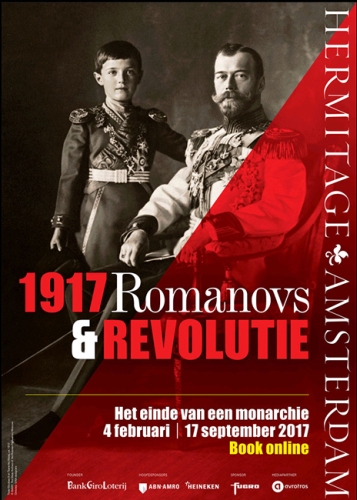
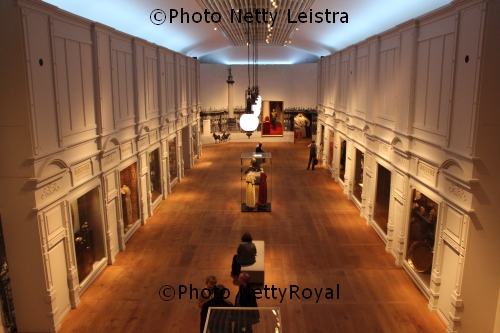
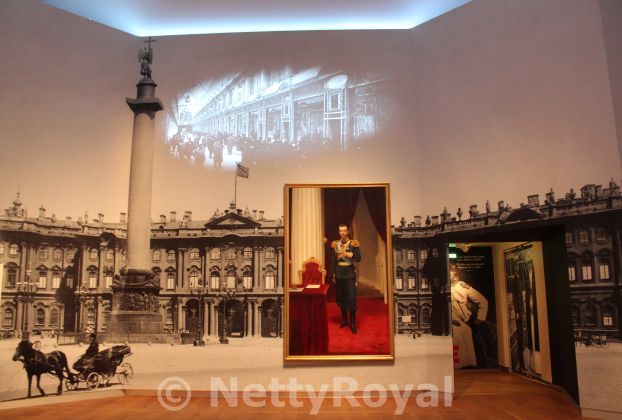
In the early 20th century The Passage on the Nevsky Prospekt was the place for the aristocracy and bourgeoisie to stroll and shop in the high-end shops, to visit the coffeehouses, museums, the theatre, watching art. The 180 metre long shopping arcade was built in 1846-1848. It had three floors, 104 shops and an impressive glass roof. The Hermitage recreated a passage with luxuruous items that were sold in The Passage, from Fabergé to beautiful dresses, porcelain, art and the pictures of the famous photographer Karl Bulla. At the end is a huge portrait of Tsar Nicholas II and from there the exhibition leads the visitor into a totally different world. The world of the Romanovs and the monarchy that finally ended in a revolution, a republic and the murder of the Tsar and several family members. A sharp contrast also.
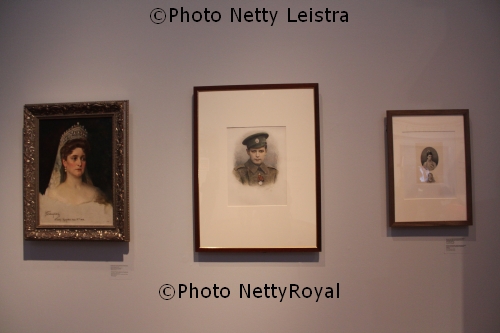

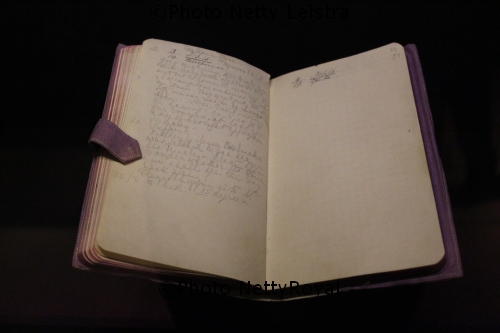
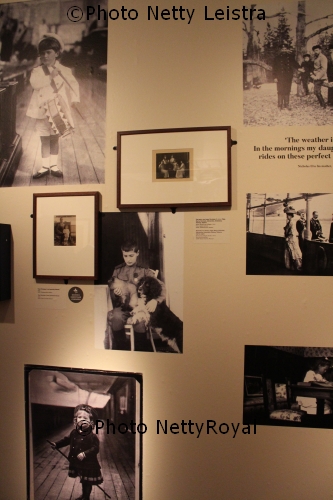
1894 was not only the year of the death of Tsar Alexander III, but also the accession to the throne and marriage of Tsar Nicholas II. And this is where the royal part of the exhibition really starts. Although several family members were against the marriage, Nicholas choose the love of his life, Princess Alix von Hessen-Darmstadt, a granddaughter of Queen Victoria of Great Britain. She converted to the Russian Orthodox faith and took the name of Alexandra Feodorovna. Nicholas was not really ready to take the throne, and also said so himself. He was an autocrat, but lacked his father’s charisma and didn’t like political change. He passionately believed in his role as the God’s anointed. He also disliked his royal duties and preferred his private family life. Not the best qualifications for the ruler of a huge Empire. Nicholas and Alexandra had four daughters – Olga, Tatiana, Maria and Anastasia – as well as a son, Alexey, who suffered from haemophilia.
When in 1896 Nicholas was crowned, probably more than 3000 people were trampled underfoot, but festivities went on and this didn’t increase the Tsar’s popularity. Revolutionary activism grew in the early 20th century. Russia was in war with Japan, at least hundreds were killed when palace guarsds at the Winter Palace opened fire at large crowds in 1905 (Bloody Sunday). Some years later the family met the faith healer Grigory Rasputin, who had lots of influence on their life and decisions. In 1914 Russia entered the First World War and in February and October 1917 there were revolutions in the country itself. Russia no longer was a monarchy. In October the Bolsheviks, led by Vladimir Ilyich Lenin, managed to seize power. In August 1918 the imprisoned Tsar and his family were moved from Petrograd (St Petersburg’s name after 1914) to Tobolsk. In April 1918 they were moved to Yekaterinburg, were they were killed in the night of 17 to 18 July 1918.
1917, was the ultimate turning point in the history of Russia. Which role did the Tsar play in the end of the 300-year-old Romanov dynasty? Which choices and decisions that he made led to unrest and revolution? The exhibition gives seven missteps of Nicholas, that in the end led to the end of the Romanov dynasty, and tries to explain these missteps and why they were so important.
- An unsuitable Tsarina.
- The Tsar danced on despite of the many casualties at the coronation festivities.
- Where is the Tsar? The late reaction of the Tsar to the riots in St Petersburg in 1905.
- Refuge into family life.
- Influenced by a ‘man of God’ (Rasputin).
- Father and son to the front in 1915.
- The Tsar opens fire on his own people in February 1917.
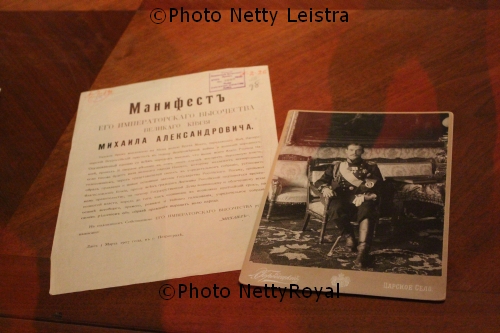
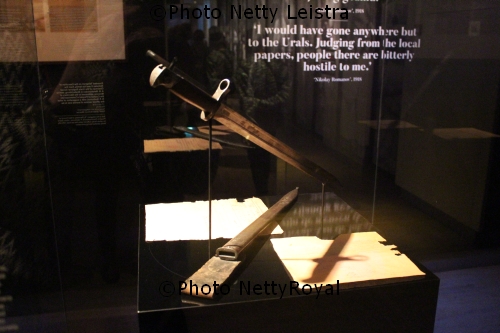
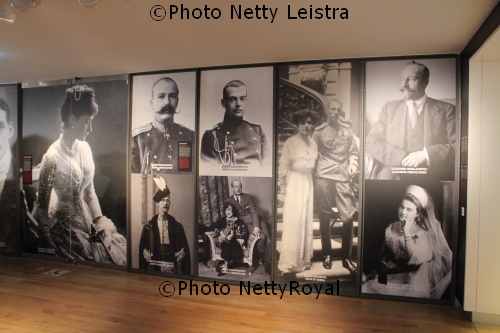
On display are over 200 objects from the State Hermitage Museum in St Petersburg, Russia, as well as intimate historical documents from the Russian State Archives in Moscow. Included in the exhibition are paintings, family holiday pictures, love letters, the last diaries of Tsar Nicholas II and Tsarina Alexandra, childhood drawings, clothing, film fragments and even one of the bayonets used to murder Tsar Nicholas II and his family in July 1918. Also on display are the act of abdication of the Tsar, as well as a pamphlet of his brother Grand Duke Michael rejecting the throne just one day later. The exhibition ends with Lenin and the cruel faith of the Tsar, his wife and children, but also of some other family members who were killed in 1918 and 1919. The sad end of a long-time monarchy.
For everyone who is interested in the subjects the exhibition is absolutely a must see. The objects on display, the again stunning design of the exhibition itself with the Passage and huge pictures on the walls. There is an audiotour for the exhibition, but also lots of texts and quotes on the walls for anyone who doesn’t like these audiotours. And in the museum shop there is a good selection of books for sale. You can buy some souvenirs, and of course the beautiful catalogue of the exhibition, so at home you can have another look at everything you have seen and read some extra background information. Probably interesting for people who love the Dutch royal family. At the end of the catalogue is an article by writer Alexander Münninghoff called “Queen Wilhelmina and the Romanovs. An Uneasy Relationship”.
EDIT: The catalogue is available both in English and in Dutch. Also the shop sells books in both languages.

One thought on “1917. Romanovs & Revolution”